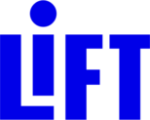Last Month, three members of the National Program Team – Sophie, Stacy, and Maria – traveled to California to get schooled on something called “improvement science”, which is an approach (and growing movement!) to get better at getting better. We’ve collected their findings to share with you in a series of blog entries.
“Continuous Learning at the Carnegie Foundation Summit,” Part Two
A lesson from education: With urgency of change, we often fall into the trap of implementing fast. We need to change this frame to “learn fast to implement well”. The field of education knows a lot about large scale, sweeping reforms, as well as pressures to implement reforms quickly. Too often, providers are pressured to implement changes immediately without knowing why, what, or for whom the change is intended. When those changes do not work, they don’t know if the problem was the change itself, the implementation of the change, or both. Improvement science suggests another way. For example, instead of making a change across an entire school system, start with one school and one principal (or even on teacher and one classroom). Test the change, study the impact, tweak the intervention and test it again. The next step might be to spread the intervention to three schools (or three teachers and three classrooms) and study the different contexts, tweak again to respond to local needs, and re-test. Through a series of trial and error, learning and retesting, we can learn fast to implement well. This approach requires a culture shift and all stakeholders can and should be included from top leaders (superintendent) to direct service providers (teachers) to the recipients (students) and everyone in between.
A favorite quote and lessons for LIFT: If I had 20 days to solve a problem, I would take 19 to define it (Albert Einstein). It’s a common tendency to see a problem and quickly identify “solutions”. If providers don’t understand the system in which they operate, they may be responding to the wrong problem by jumping to an incorrect conclusion, or responding to what is easy to solve rather than what is most important. As LIFT evolves its program model, this is particularly relevant so that we make sure that any solution is centered on a well understood system and set of problems. But LIFT does not need to wait to begin applying these lessons! We can use “root cause analysis”, asking “why” again and again, and using data to inform our understanding.
Want to learn more about improvement science? Check out the Carnegie Foundation’s website for more info, read part one of this series, and part three.
